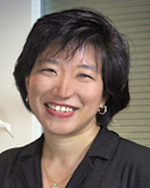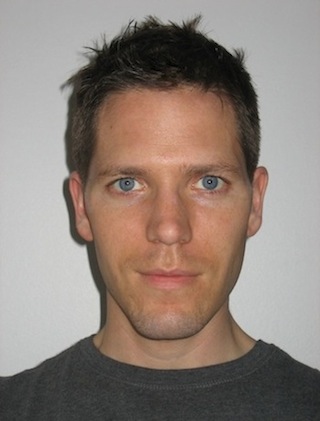
Grace Peng, Ph.D.
|
Grace C.Y. Peng received the B.S. degree in electrical engineering from the University of Illinois at Urbana, the M.S. and Ph.D. degrees in biomedical engineering from Northwestern University. She performed postdoctoral and faculty research in the department of Neurology at the Johns Hopkins University. In 2000 she became the Clare Boothe Luce professor of biomedical engineering at the Catholic University of America. Since 2002, Dr. Peng has been a Program Director in the National Institute of Biomedical Imaging and Bioengineering (NIBIB), at the National Institutes of Health. Her program areas at the NIBIB include mathematical modeling, simulation and analysis methods, and next generation engineering systems for rehabilitation, neuroengineering, and surgical systems. In 2003, she brought together the Neuroprosthesis Group (NPG) of program officers across multiple institutes of the NIH. Also in 2003, Dr. Peng lead the creation of the Interagency Modeling and Analysis Group (IMAG), which now consists of program officers from ten federal agencies of the U.S. government and Canada (www.imagwiki.org/mediawiki ). IMAG has continuously supported funding specifically for multiscale modeling (of biological systems) since 2004. IMAG facilitates the activities of the Multiscale Modeling (MSM) Consortium of investigators (started in 2006). Dr. Peng is interested in promoting the development of intelligent tools and reusable models, and integrating these approaches in engineering systems and multiscale physiological problems. |
Gerwin Schalk, Ph.D.
|
Gerwin Schalk earned his B.S. and M.S. in Electrical Engineering and Computer Science at Graz University of Technology, Graz, Austria. He earned an M.S. in Information Technology and a Ph.D. in Computer and Systems Engineering at Rensselaer Polytechnic Institute. His main professional interest is technical innovation at the intersection of neuroscience, engineering, and clinical domains. His primary research interests are the development and application of novel techniques to study brain function using signals recorded from the surface of the brain (electrocorticography (ECoG)), and the application of the resulting understanding to important clinical problems. His lab's neuroscience research investigates the neural basis of motor, language, and cognitive function by applying computational techniques to recordings from the surface of the brain in humans. |
Spencer Smith, Ph.D.
|
Spencer Smith earned his B.S. in physics and mathematics from the University of Iowa and his Ph.D. from UCLA. We explore neocortical neural circuitry-- its development and function-- using imaging, electrophysiology, and behavior. The goal of our research is a better understanding of how molecular, cellular, and synaptic mechanisms underlie the function of large-scale neocortical circuitry. Ultimately, we hope this better understanding may illuminate the mechanisms in complex diseases like autism and schizophrenia, and suggest new therapeutic strategies. To interrogate large-scale neural circuitry at the cellular and synaptic levels, we monitor neural activity during normal brain function and during various manipulations. We use a range of different techniques to carry out this work, including imaging, electrophysiology, optogenetics, and behavior. Currently, the principal model system for our studies is the mouse visual cortex. |
Leonard White, Ph.D. Associate Professor
|
Leonard White earned is B.S. in Biology and M.B.S in Physiology from Oral Roberts University. He earned his Ph.D. in Neural Biology from Washington University in St. Louis. One important goal of neuroscience is to understand the fundamental principles that shape the developing brain. To achieve this goal, it is necessary to characterize the interactions between sensorimotor behavior and genetically programmed mechanisms of brain development. This interplay between intrinsic and experience-dependent factors is most dynamic during early life, at a time of explosive increase in the numbers and complexity of neural connections. It is precisely this increase in neural capacity that makes possible the rich repertoire of behavior associated with functional maturity. My primary interest is to understand how sensorimotor experience in early life influences—for better or worse—the formation and maturation of functional neural circuits in the cerebral cortex. My collaborators and I believe that our studies are providing insight into the nature of normal brain development and the consequences of disrupting the partnership between intrinsic developmental mechanisms and early sensorimotor experience. |



